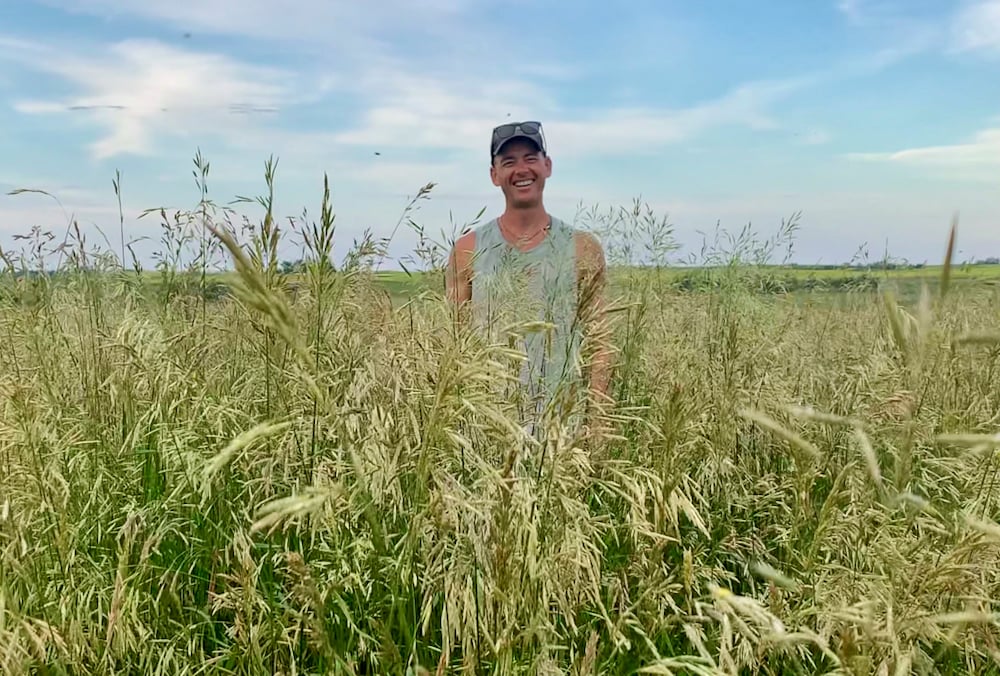
Should soil organic matter be a factor in insurance premiums?
Farmers could one day see their crop insurance premiums drop if they have high levels of organic matter in their soil.
A study by the Agriculture Financial Services Corporation found that farms with soil richer in organic matter have better yields and fewer crop insurance claims.
In the region between Edmonton and Red Deer, AFSC researchers divided fields according to the level of soil organic matter. Fields with above average levels produced an average of 71.5 bushels of barley per acre last year, while fields below average produced only 59.5 bushels. It was a similar story with canola.
These are important findings, said Stuart Chutter, product coordinator with Crop Insurer.
“If we look at what we have paid out in claims over the last 21 years – so from 2000 to 2021 – 50% of the insurance payouts we make are due to drought conditions or water limitations,” did he declare. “So anything that reduces the risk of drought is very important for crop insurance.”
The payment figures for the domains studied in 2021 confirm this.
“We paid above-average soil organic matter fields $24 an acre, but below-average fields, we paid more than double that,” Chutter said.
However, he pointed out that there were no plans to tie crop insurance premiums to organic matter levels and that the AFSC only talks about its research to foster a discussion in the farming community.
[READ MORE] Try cover crops and have fun, says soil health expert
However, he also noted that USDA research indicates that a 1% increase in soil organic matter can increase soil water-holding capacity by about 25,000 gallons per acre. That equates to one inch of rain, he said.
Photo:
USDA Natural Resources Conservation Service
“It’s basically a safety margin that keeps things going during (dry) times,” Chutter said. “So instead of plants being stressed and slowing their growth in dry conditions, there is a bank account of safety through extra water holding capacity.”
This increased capacity also means that during periods of excessive humidity, there will be less runoff and/or pooling.
“When it comes to excess moisture and unseeded acreage with crop insurance, if that moisture is held in the ground instead of building up in your low spots, that land can be seeded,” said Fall. “It can be productive. This can generate profits for the farm and prevent unseeded acreage claims.
Look forward
Chutter said the topic will be part of future analysis.
“This topic has generated some hesitation or comment from industry. Are there any lands that when priced individually are too risky? What are the social impacts? Is this desirable Maybe. Or maybe not. That’s a great question. Are we dependent on this land for food security and production in the economy or should we be grassland, perennial cover, or something else? ?”
There are also technical questions to address, including how AFSC would determine organic matter levels for each field in the province it insures.
“A lot of that hasn’t been resolved,” Chutter said. “This is preliminary research to engage the industry, to have these kinds of discussions.”
It’s a topic that should be discussed, said Jason Lenz, who farms near Bentley and is vice-president of Alberta Wheat.
“Certainly the science behind this is very proven,” he said. “A soil rich in organic matter retains moisture better. It makes better use of the nutrients that are in the soil, and is overall better for crops and overall soil health.
“It’s very innovative for the AFSC to think this way.”
Innisfail-area producer Wade McAllister also praised the insurer for looking into the matter, but noted that crop insurance and risk assessment are complex topics.
He highlighted his farm, saying it is blessed with high levels of organic matter (seven to 11 percent), but weather and location are also important factors.
“We never have a crop insurance claim unless it’s hail,” he said. “I don’t know if it has much to do with organic matter. It has a lot to do with the weather and the area you live in, as anyone in the south can be subject to a crop insurance claim three out of five years.
McAllister said crop and hail insurance on his family’s farm costs around $35 to $40 an acre, but he’s thankful it exists after hail wiped out most of his fields this year – the more damage in the 132 years of the farm’s existence.
“I’m going to fill probably six of the 30 bins we have,” he said.
Another issue with using organic matter levels as part of the bounty calculation is the time it takes to increase those levels. The McAllisters, for example, opted for no-till more than two decades ago, but stewardship efforts like that take a long time to increase organic matter levels.
“It’s a multi-year process to gain small percentage points in your soil organic matter,” Lenz said. “That means long-term planning and the long-term sustainability of your farm if it’s your goal to build organic matter.”
On the other hand, the prospect of having lower premiums – a benefit that would recur every year – could be an additional incentive to use practices that increase the rate of organic matter and to avoid those that reduce it.
But first, there needs to be more study before considering a premium reduction for fields with higher organic matter, Chutter said.
“Based on a purely risk-based approach, if the findings of this initial project are true and applicable across the province, then yes,” he said. “If there are increases in soil organic matter that reduce the actual risk, internalizing that in the price would lead to lower costs.”
In the meantime, he added, there are other ways to reduce the risks to agricultural production, including more diverse rotations, reduced tillage, earlier sowing dates and the use of resistant varieties. drought and early ripening.

Comments are closed.